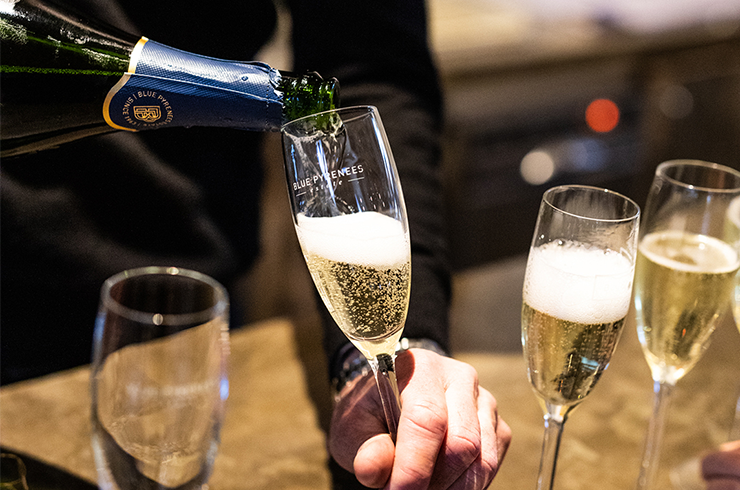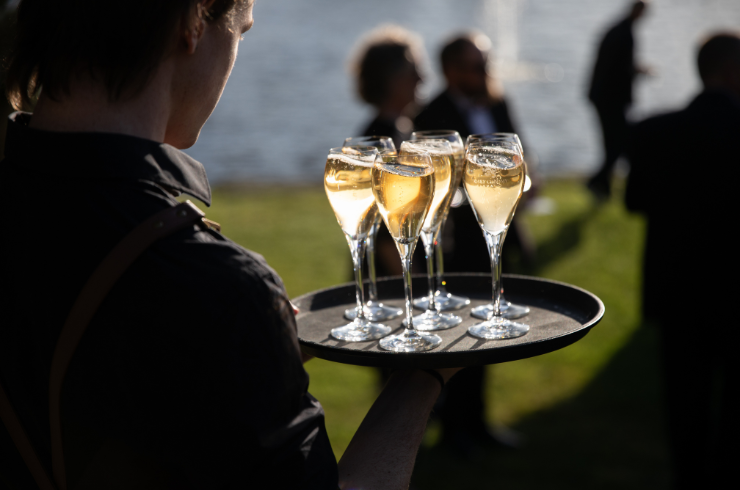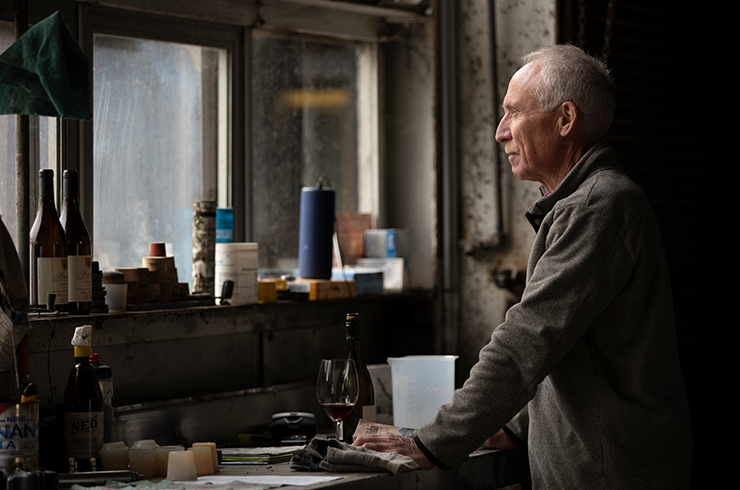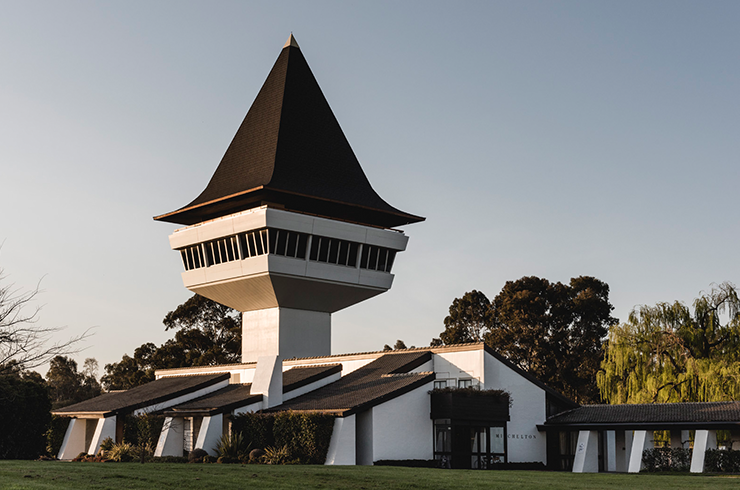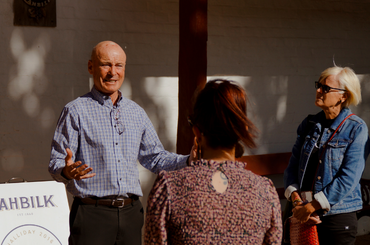Siobhan Wigan, winemaker at Hentley Farm, remembers feeling pretty relaxed in October last year, just before the winner of the prestigious Jimmy Watson Memorial Trophy was named at the Melbourne Royal Wine Awards presentation dinner in Melbourne. Very relaxed.
“The team had convinced ourselves we probably wouldn’t win with a grenache,” she remembers. They were wrong.
Applause erupted as the MC read out the winner: Hentley Farm The Old Legend Grenache 2021, Barossa Valley. It was only the second time a grenache had won in the award’s 60-year history. Arguably the most coveted in Australia, the Jimmy, as it is fondly called, is awarded annually to the best one- or two-year-old dry red in the country.
Barossa Valley-based winery Turkey Flat was the first to break through the Jimmy ‘grenache’ ceiling in 2017 with its 2016 release. Hentley Farm’s win was surely a sign that the grape was not only shaking up wine show judges’ tastebuds but revealing a significant change in style direction.
“Grenache is definitely hitting its straps,” Siobhan says, “especially as producers embrace the lighter, vibrant, fruit-forward yet complex styles. [It] is ready to have its time in the spotlight.”
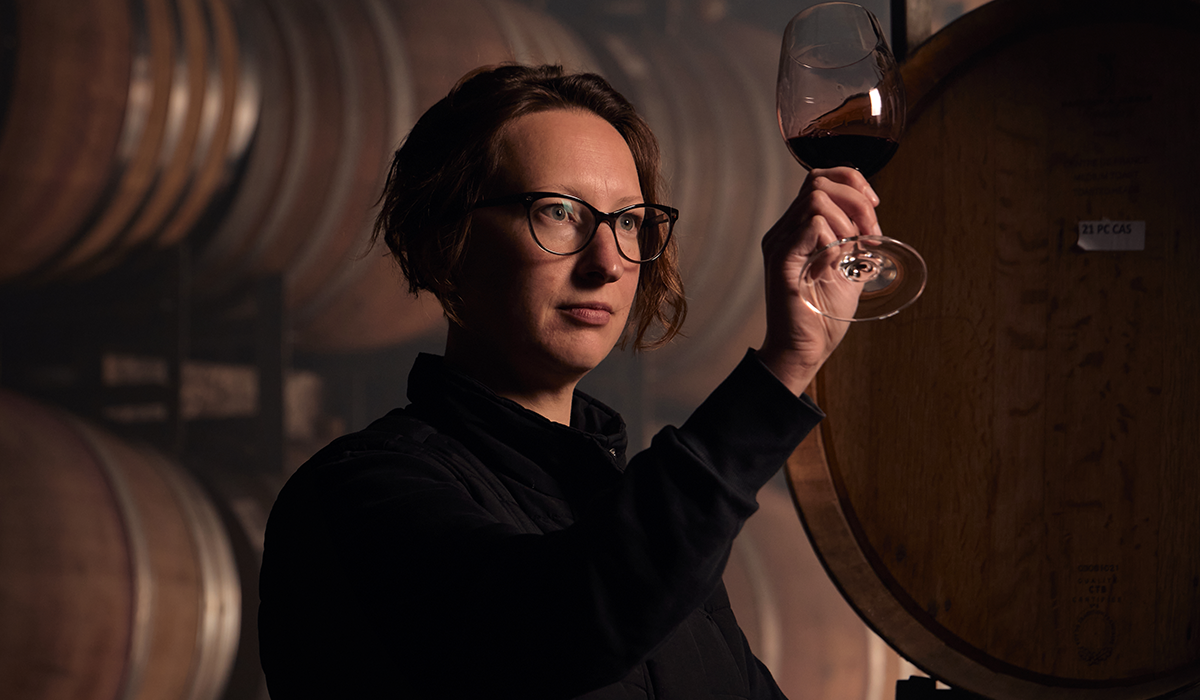
That spotlight as been a long time coming. From fortified filler to third-string GSM blending partner, grenache has been a perennial wine industry workhorse, a fixture of warm-climate regions like the Barossa, lapping up the sun and producing at times high yielding, sweet wines of average quality.
The shift to single varietal wines in the past 20 years moved the needle, sometimes too much, to full-bodied, bold styles with alcoholic grunt. Today we see a more thoughtful winemaking hand at work producing better balanced, fine-edged wines in high quality. What changed?
It’s tempting to suggest that grenache grew up, led by a deeper appreciation of the intrinsic beauty of old vines. During the 2023 vintage, Barossa Valley grenache grape prices started at $2000 per tonne, while 100-year-old bush vines demanded $3000+ a tonne. Or, maybe it’s more about winemakers taking a third or fourth look at a grape that, like shiraz before it, tended to be taken for granted.
“I think the grenache story highlights the resilience of the vines and growers, notes Ian Hongell, general manager and chief winemaker at Torbreck in the Barossa Valley. Few grapes, he adds, could have so successfully transitioned through the decades and numerous challenging consumer and market demands to be where grenache is today.
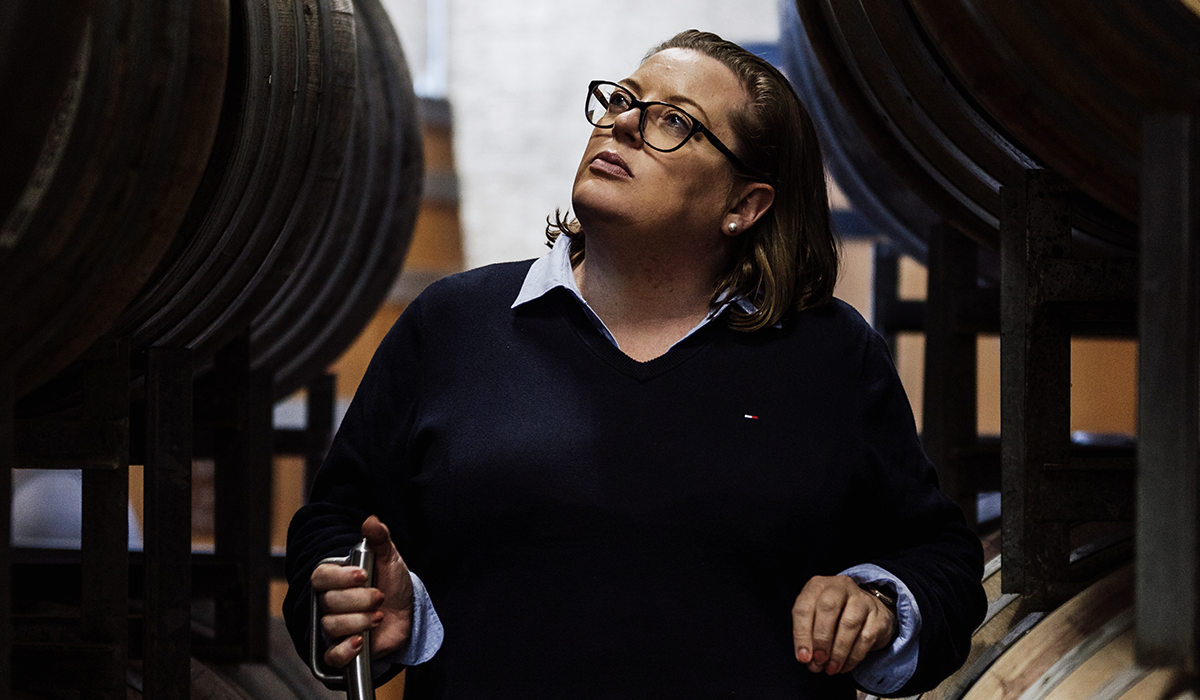
From grenache rosé to juicy, early drinking deliciousness and seriously impressive premium quality reds, the grape is on a roll. And the two big grenache strongholds – McLaren Vale and Barossa Valley – are leading the charge.
Barossan producers like Susan Papps at Yelland & Papps have altered their approach. “There is definitely a change in winemakers picking grenache earlier and trying to maintain more savouriness and less of the sweeter confectionery flavours. Keeping alcohols in check and the use of whole cluster fermentation is also becoming more evident,” Susan says. The result? More vibrant, elegant and textured wines that can be enjoyed straight away while also having the benefit of ageing well.
In McLaren Vale, cooler vineyard sites are being explored and the results are impressive: greater finesse, purity and depth of flavours where restraint is a feature, not power. That also leads to less obvious new oak.
One winemaker enthusiastically embracing what he calls ‘Old World’ winemaking is Mike Brown at Gemtree, who makes two styles of grenache under his Small Batch Collection label. He ferments grenache and then divides it 50/50 into separate maturation vessels – traditional oak and concrete eggs. “For me, I love the concrete: textural, tense with fine tannin,” he enthuses.
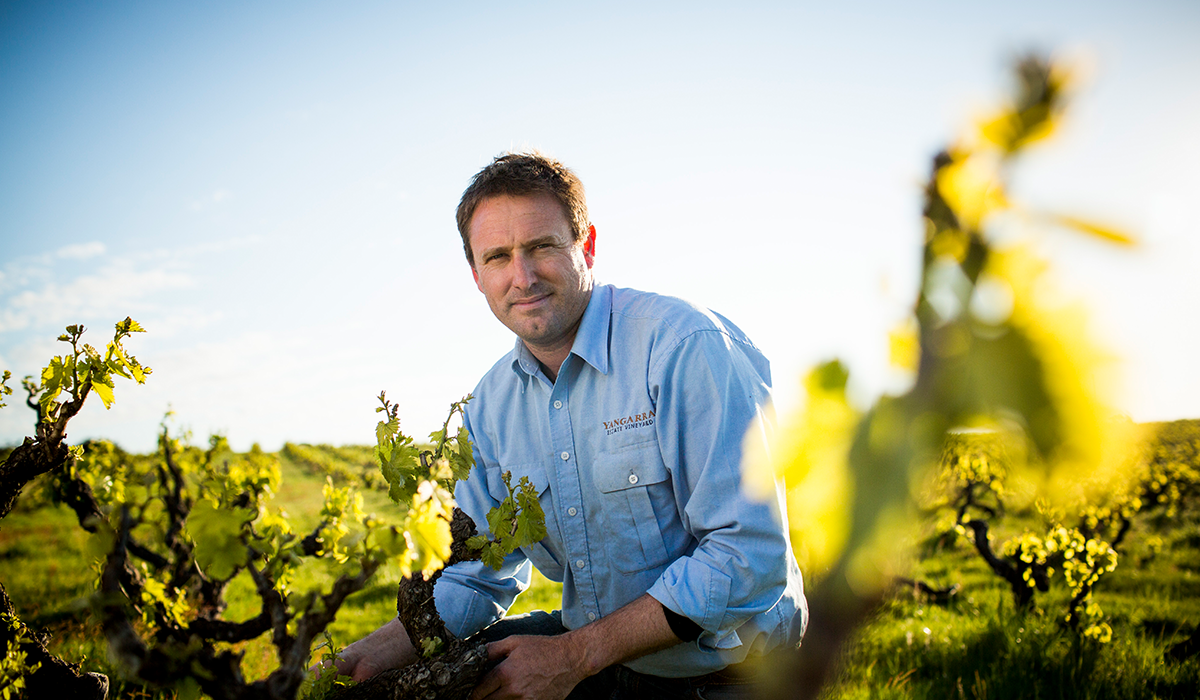
One of the most expensive grenaches in the land, the $300 Yangarra Estate Vineyard High Sands Grenache, is a case in point. It is sourced from the highest section (210m) of Yangarra’s 1946-planted bush vines in McLaren Vale and is matured on lees in an old, large French oak foudre and ceramic eggs for 11 months. Old school and deeply impressive. Not to mention, the $45 Yangarra Estate Vineyard Old Vine Grenache 2021 was this year’s Red Wine of the Year and Grenache of the Year, with Yangarra also nominated for Winery of the Year.
The newly released 2024 Halliday Wine Companion provides a snapshot of grenache as it stands today in Australia. In the past 12 months, the Tasting Team reviewed 324 single-varietal grenaches (28 more than the previous year) and 158 grenache-dominant blends, a total of 482 wines. McLaren Vale dominated the tastings followed by the Barossa Valley.
Of the wines reviewed, 29 per cent scored 94 points or higher, and 36 per cent earned a Special Value rosette. The book also details the emergence of producers and areas not traditionally associated with the grape, regions such as Heathcote, Yarra Valley, Frankland River, Hilltops and Langhorne Creek.
In the Yarra Valley, the early grenache charge was led by Tom Carson and Nadège Sune at Serrat, who planted what is believed to be the region’s first grenache vines in 2001. “It was good from the start,” says Tom. The grape coped well during the millennium drought and during the recent La Niña, it shined.
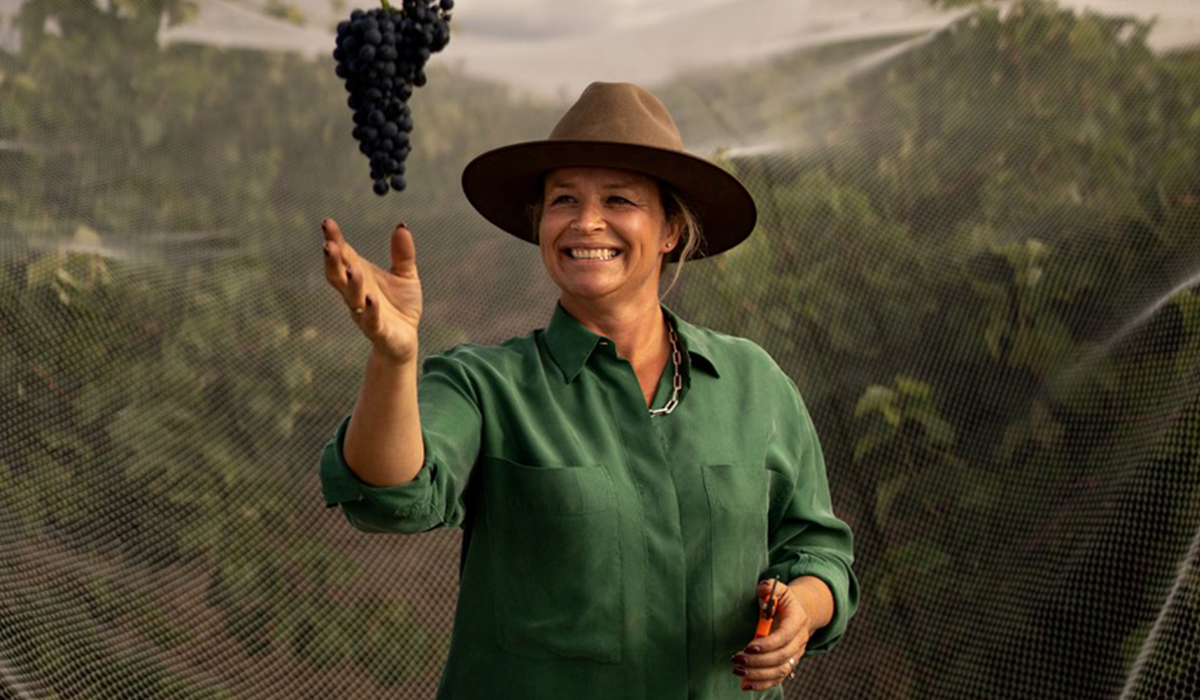
“The 2021 is the best wine we’ve made,” he adds. In Langhorne Creek, the Willson sisters at Bremerton lucked upon some of the region’s old-vine grenache. “Our approach is for a lighter- to medium-bodied, crunchy fruit-forward wine,” says winemaker Rebecca Willson. “I love the chamois tannins and boiled lollypop fruit and spicy element that this style brings.”
In Heathcote, producers such as Bindi, De Bortoli and Tellurian are discovering a range of styles. “The grapes have a natural balance and lovely interplay between fruit and earth,” says Bindi’s Michael Dhillon. “It really resonates with my pinot noir mindset where I’m looking for purity of many kinds: grape, site, season.”
But don’t forget the important blending role that grenache can still play. Tellurian is pursuing a Rhône style blend by planting not only grenache but mourvèdre, carignan and cinsault. “Although grenache can undoubtedly produce excellent stand-alone wine,” says Tellurian winemaker Tobias Ansted, “my personal feeling is that it may be that the best wines are made from thoughtful blends of grenache with other Rhône varieties.”
With so many Australian regions and producers looking to grenache, can we say with any real confidence that there is an ‘Australian style’ of grenache?
Corrina Wright, winemaker and director at Oliver’s Taranga Vineyards in McLaren Vale, is willing to give it a shot. “There is a level of grenache in Australia at the moment that is quite modern and fresh,” she says. “This identity has only really been developing in the past 10 years when we moved away from trying to make grenache that looked like shiraz or a generic dry red and started embracing the differences that grenache has to offer.”
Approachable, delicious, bright and crunchy or serious, earthy, savoury and structural, versatile Aussie grenache slots right into any mood, any place, any time, anyhow.
This article appears in issue #72 of Halliday magazine. Become a member to receive the print publication as well as digital access.
